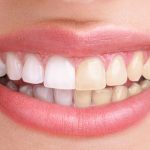Saffron, the red gold: color, savor and cure
Worshipped by ancient Greeks, Egyptians and Romans. Praised by the Bible in the “Canticle of Canticles”. Associated with wisdom and the path to Nirvana by Buddhist monks who, by tradition, wear robes in the deep color of saffron. Even Michelangelo used it to paint the Sistine Chapel.
Saffron is a spice with a long and glorious history, a history we have come to maim today, by confining it to the… kitchen area. Our ancestors knew better: there is a lot more to it, as saffron is flavour, colour and remedy against a huge number of health issues.
200,000 flowers = 1 kilogram of pistils
Crocus sativus L. of the Iridaceae family is the scientific term for saffron, a plant whose red stamina provide, through dehydration, the most expensive spice in the world, also named – somewhat poetically, but with no exaggeration – “the red gold”, for it is sold at the same price as gold. And it is a fair price, since it takes 200,000 flowers to get 1 kilogram of saffron, and a gram of powder requires several hundreds of stamina. Add this to the fact that each plant blossoms only once a year and the flowers last for one single week and the stamina have to be handpicked gently and dried just as carefully.
Saffron’s glorious career in international cuisine is due to: alpha-crocin, a carotenoid (a red pigment) which gives the crimson-yellow tint that makes any dish look so appetizing; safranal – an intense yet delicate essential oil; picrocrocin (another pigment) – a taste booster and flavour harmonizer.
The list of beneficial substances contained in saffron’s “formula” is much more extensive and explains the importance that medical professionals have attached to it from ancient times to modern day.
What does it contain?
In addition to the above-mentioned compounds, saffron contains a high concentration of antioxidants, especially carotenoids – provitamin A (lycopene, zeaxanthin, alpha and beta-carotenes), B vitamins (especially B12), over 150 volatile and aromatic compounds etc.
What sort of health issues can it treat?
Oriental medicine used saffron, a symbol of youth and happiness, to treat 90 illnesses, along with various mood disorders.
Antidepressant
After laborious studies, modern day researchers have confirmed the empirical observations of their Eastern forerunners: due to the combination between a powerful antioxidant such as crocin and vitamin B12 (an element essential in maintaining the balance of the nervous system), saffron has the same beneficial effects as a number of antidepressant drugs, without exposing the patient to the side effects of the latter (sexual dysfunction, in particular).
An anticancer, sedative and neuroprotective agent
Carotenoids (provitamin A) in saffron are able to destroy cancer cells, proving their effectiveness in cases of breast, stomach or uterine cancer, liver tumours and lesions affecting the uterus or the cervix.
The “red gold” is also a mild sedative, which makes it effective in fighting insomnia. In addition, a team of Canadian researchers has demonstrated the neuroprotective effect of alpha-crocin in animals affected by multiple sclerosis.
A remedy for skin disorders
The antioxidants contained in the “red gold” help our body fight against free radicals and therefore against premature aging affecting our skin in particular, which is why saffron is a star ingredient not only in pharmaceutical, but also in cosmetics industries. Acne, warts, burns and other skin conditions heal nicely and leave no scar when they are treated with saffron tincture.
Helpful in weight loss diets
Another interesting quality of saffron is that regulates appetite, thus decreasing the compulsive eating temptation, which makes it an excellent diet aid! All the more so as it stimulates digestion and intestinal activity.
A top painkiller
When used externally, saffron soothes gum pains and toothaches (rub your gums with saffron tincture). Due to its analgesic effect it is also recommended as a remedy for menstrual pain and the lower back pains that usually come along with it.
Do not disregard its contraindications!
Avoid using saffron remedies (powder, infusion, tinctures, food supplements) during pregnancy (especially in the first three months, when the risk of miscarriage is significant). Also, saffron remedies should not be used to treat children under the age of six.
I bet now you are looking differently at the little jar filled with yellow-orange powder in your pantry, am I right? However, do not get any original ideas! Keep using it in the traditional manner, just to add flavour and colour to your dishes, and sprinkle just a few grains, otherwise your food will taste bitter.
As for the wonders saffron works in treating various medical conditions, these are to be tested (keep that in mind!) only after consulting your doctor. And only in accordance with the doctor’s recommendations. We have praised it only because it fully deserves it and we have talked to you about its qualities in general. But, as you know, each patient is unique and each cure is prescribed according to the patient’s needs.
You also may like:
10 Essential Oils to Help You Fight Viruses and Bacteria

Saffron, the red gold: color, savor and cure by Technology for Life is licensed under a Creative Commons Attribution-NonCommercial-NoDerivatives 4.0 International License.

 Previous Post
Previous Post Next Post
Next Post



